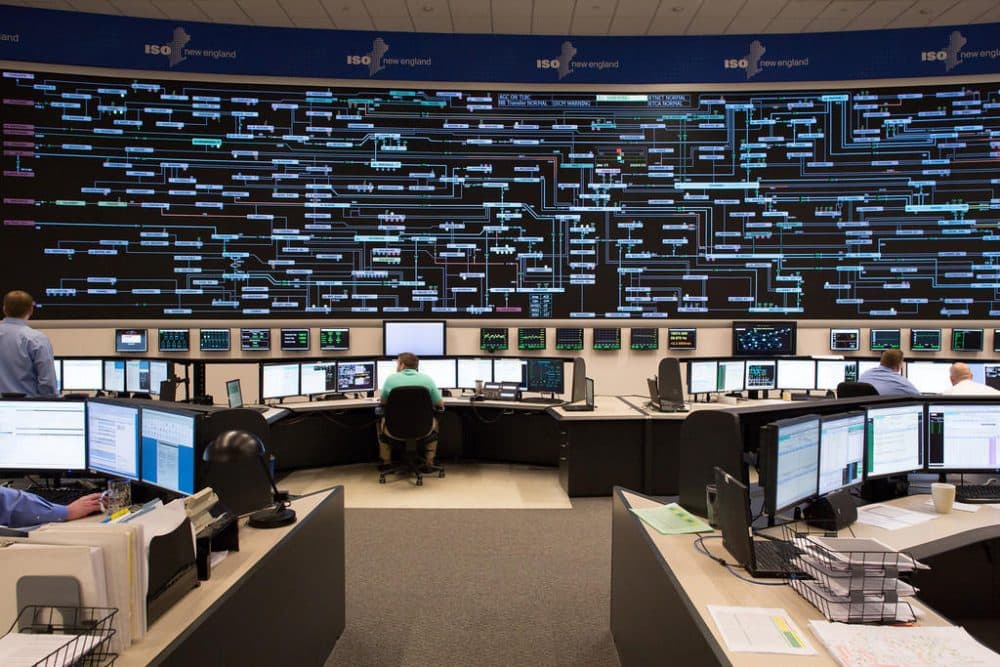Advertisement
Reliance On Gas, Renewables Comes With Risks, Grid Operator Says

As New England continues to move toward greater reliance on natural gas and renewable power, the region also faces a growing risk of energy demand outpacing supply, according to the organization that operates the system.
Gordon van Welie, president and CEO of ISO-New England, said in a Wednesday "State of the Grid" conference call that the energy infrastructure in place is a "strong foundation" but one with increasing vulnerabilities. Unlike oil and nuclear power, most natural gas is delivered just before it is used, while solar and wind energy depend on weather conditions. That increases the likelihood of shortages caused by external stressors.
"While they will bring benefits, the evolving resource mix will also intensify risks that there will not be enough energy to meet demands during the winter," van Welie said. "The risk of insufficient energy is likely to expand to other times of year as well."
His remarks Wednesday came 14 months after a lengthy cold spell constrained natural-gas delivery and forced energy providers to fall back on oil supplies. From Dec. 25, 2017, to Jan. 9, 2018, power plants in Massachusetts burned roughly 2 million barrels of oil, more than twice as much as was used in all of 2016.
At the time, Executive Office of Energy and Environmental Affairs Secretary Matthew Beaton called the situation an economic and environmental "disaster." His office later called for the federal government to make it easier to ship liquified natural gas, often used when gas from the pipeline is short, to Massachusetts.
Across the state, van Welie said, facilities are retiring on-site fuel types that could be used as backups and transitioning to new types, partly because of lower prices for natural gas and renewables and partly because of legislative mandates requiring investment in sustainable energy. About two-thirds of new projects proposed in the ISO Interconnection Queue, for example, are for wind power.
ISO-New England is independent of any company in the marketplace, and the company does not oppose the long-term changes to the infrastructure. But van Welie, who said he is "incrementally more concerned" than last year, warned that it is challenging to design, approve and build necessary infrastructure to make up for the production lost.
"New England has enough capacity," van Welie said. "The concern is whether there will be enough fuel for all those power plants to generate electricity, whether their fuel is oil, natural gas, wind or sun."
Advertisement
What will be key, he said, is a clear, thoughtful strategy for the future to develop a multifaceted energy market.
Some changes are underway that could help the ongoing transition. About 1,300 megawatts of grid-scale battery storage has been proposed for implementation by 2022, which would help retain power from renewable sources as a backup.
The demand on the grid is changing, too, thanks in part to more than 160,000 small solar arrays across the region that are unconnected to the grid, and those arrays are helping power residences and businesses. People typically draw more power from the grid during the afternoon than during common sleeping hours, but on April 21, 2018, for the first time ever, New England residents drew more power from the grid late at night than they did during the day, which van Welie attributed to the use of power from solar arrays that afternoon.
The organization itself cannot implement carbon pricing, but van Welie said several times he supports the idea, calling it an "elegant solution" that would help reduce environmental impacts while maintaining competition between energy providers.
"I've been a bit of a broken record on this for many years," van Welie said. "Everyone is aware of our position on this. In the long run, I think it's the right answer for the region."
Another key suggestion van Welie raised on the annual call is an update to New England's electrical grid that would help track fuel levels across the region. The system does not have a fuel gauge to indicate when levels are running low.
"What we want to do is share that information with the market as a whole and furthermore have the market put a price on that so that if somebody's got fuel today and doesn't need to burn it because they can earn more tomorrow, that's a better outcome for the region," van Welie said.
This article was originally published on February 20, 2019.